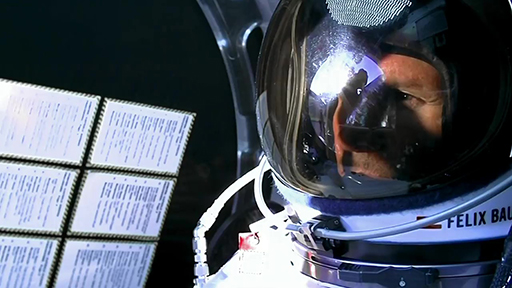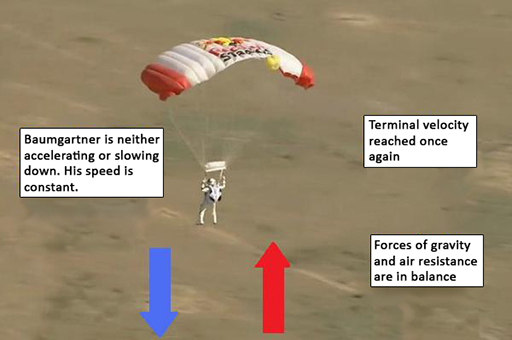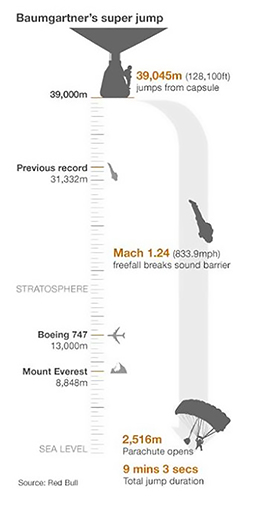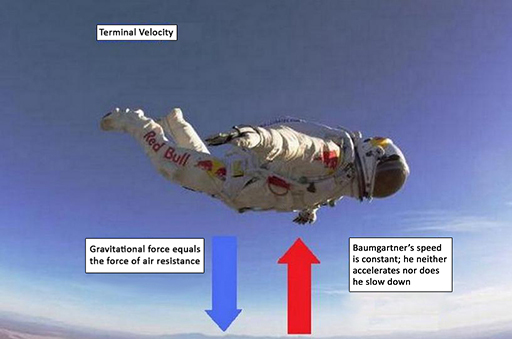1 Felix Baumgartner’s record freefall jump
Watch Video 1, which shows Felix Baumgartner achieving the freefall record during his successful attempt at the jump world record on 14 October 2012.

Transcript: Video 1 Felix Baumgartner’s world record jump.
[MUSIC PLAYING]
[CHATTER]
[SIDE CONVERSATION]
[CHEERING]
[MUSIC - TWIN ATLANTIC, "FREE"]
[RADIO SQUELCH]
[MUSIC - TWIN ATLANTIC, "FREE"]
[HEAVY BREATHING]
[APPLAUSE]
[CHEERING]
[APPLAUSE]
[WHISTLING]
[CHEERING]
-
Figure 1 gives 833.9 mph which is 1342 km/h. How would you convert this to m/s? What would his maximum speed be in m/s?
-
First, multiply 1357.6 by 1000 to change km to m. Your intermediate answer is then 1.3576 × 106m. Then divide this answer by (60 × 60) to change hours to seconds. Your final answer should be 377.11 m/s.
The speed of sound in air at about 20 000 m is around 300 m/s. So, at this maximum speed of 377 m/s, Felix was travelling faster than the speed of sound, which is measured on the Mach scale. This was the first time the sound barrier had been broken by a human outside an aircraft!
Note that these values are given precision up to 5 significant figures. This precision is retained throughout this section.
Figure 1 shows the jump in more detail. Using the details from Figure 1 and Video 1, complete Activity 1.
Activity 1 Felix Baumgartner’s record jump
Choose the correct options to complete the following statements.
Baumgartner’s maximum speed in freefall was also his terminal velocity. This means he was no longer accelerating as the forces acting on were balanced. There were two main forces acting on him – Earth’s gravity and air resistance, each acting in opposite directions (Figure 2).
Obviously, it would be too dangerous to land at his maximum speed! Therefore, a parachute was deployed at 2516 m. This increased the air resistance. The forces then became unbalanced. Baumgartner’s speed then reduced until the forces were balanced again. At this stage, a lower (and much safer!) terminal velocity was reached (Figure 3). Remember the end of Video 1 where he appears to step calmly onto Earth?

During his freefall, Baumgartner was effectively in a microgravity environment. He was falling to Earth in the same way that the ISS and the Moon fall to Earth. Clearly, this is too dangerous (and expensive) to replicate for reliable scientific research, so instead drop towers are used, as you will see next.


